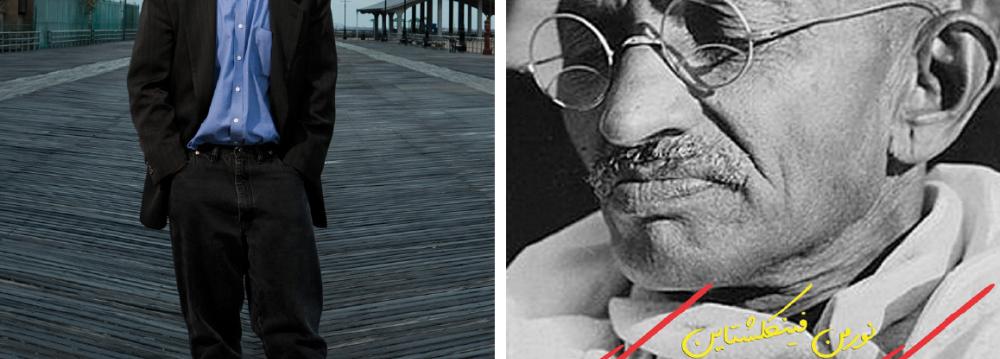‘What Gandhi Says,’ a 2012 book by American political scientist and author Norman Gary Finkelstein, 63, is now available in Persian.
The late author and translator Mohammad Vaezinejad has rendered the book into Persian. It is recently released by the Tehran-based publications of Mahi in 112 pages, LISNA (lisna.ir), a local news website on librarianship reported.
‘What Gandhi Says: About Nonviolence, Resistance and Courage’ is a small book written to help remove misunderstandings the author believes exist about the concept of ‘nonviolence’ introduced by the powerful leader of India’s independence movement, Mahatma Gandhi (1869-1948).
In an introduction to the Persian edition of the book, Vaezinejad says many people refer to Gandhi’s words, but few have read his writings. “At the library of a renowned American university, I realized that from among some 100 of his books, only one had been borrowed.”
As regards the general misunderstanding about the globally respected revolutionary leader, Vaezinejad explains: “Gandhi now represents the reduced mantra of nonviolence; but his thoughts are far more complicated than this rather oversimplified motto.
Gandhi is usually perceived as a hermit. He was of course a peculiar monk, but also a clever politician and a deft strategist. Truly he hated violence, but hated cowardice even more.”
Gandhi’s principles were reconsidered in a new light when the Occupy Movement started in 2011. On September 17 of that year, several hundred people marched to an empty square in Lower Manhattan to protest against an ever widening gap between the rich and poor and lack of ‘real democracy.’
The doctrines of Gandhi found their echo when Occupy Movement spread across the world with repercussions at Tahrir Square in Cairo, Egypt and Puerta del Sol Square in Madrid, Spain.
If there has been widespread recognition of Gandhi’s role in developing and underpinning the Occupy Movement, few have cared to examine what Gandhi really said about the relationship between nonviolence, resistance and courage, according to a statement by English publishing company OR Book.
Drawing on extensive readings of Gandhi’s copious oeuvre and intensive reflection on the way that progress might be made, Finkelstein, whose primary areas of research are the Israeli-Palestinian conflict, sets out in clear and concise language the basic principles of Gandhi’s vision and approach.
There is much that will surprise in these pages: Gandhi was not a pacifist; he believed in the right of those being attacked to strike back and regarded inaction as a result of cowardice to be a greater sin than even the most ill-considered aggression. Gandhi’s calls for the sacrifice of lives in order to shame the oppressor into concession can easily be seen as chilling and ruthless.
Gandhi insisted that, in the end, peaceful resistance is always less costly in human lives than armed opposition; that the role of a protest movement is not primarily to convince people of something new, but rather to get them to act on behalf of what they already accept as right.
“Many of us believe we know who Gandhi was and what he represented. The truth is something quite different, and important. As Norman said to me when he gave me this tiny volume, you can read it in one sitting. That will be an essential sitting for anyone who is interested in the matter of genuine courage in the pursuit of just goals,” Julian Paul Assange, 46, founder of WikiLeaks, the publisher of classified media, said about the book.


